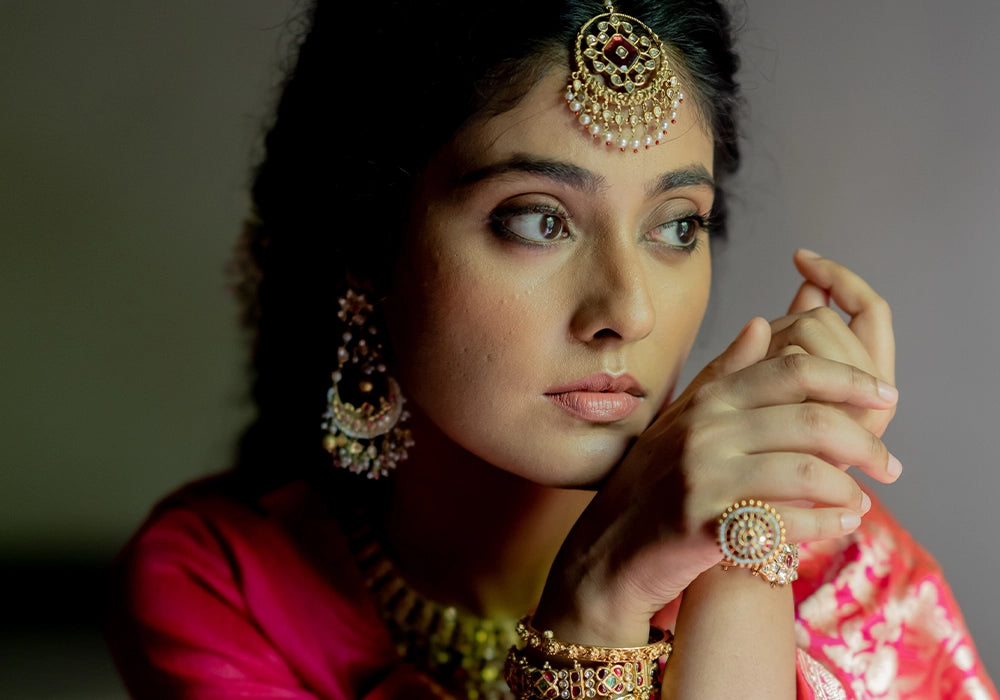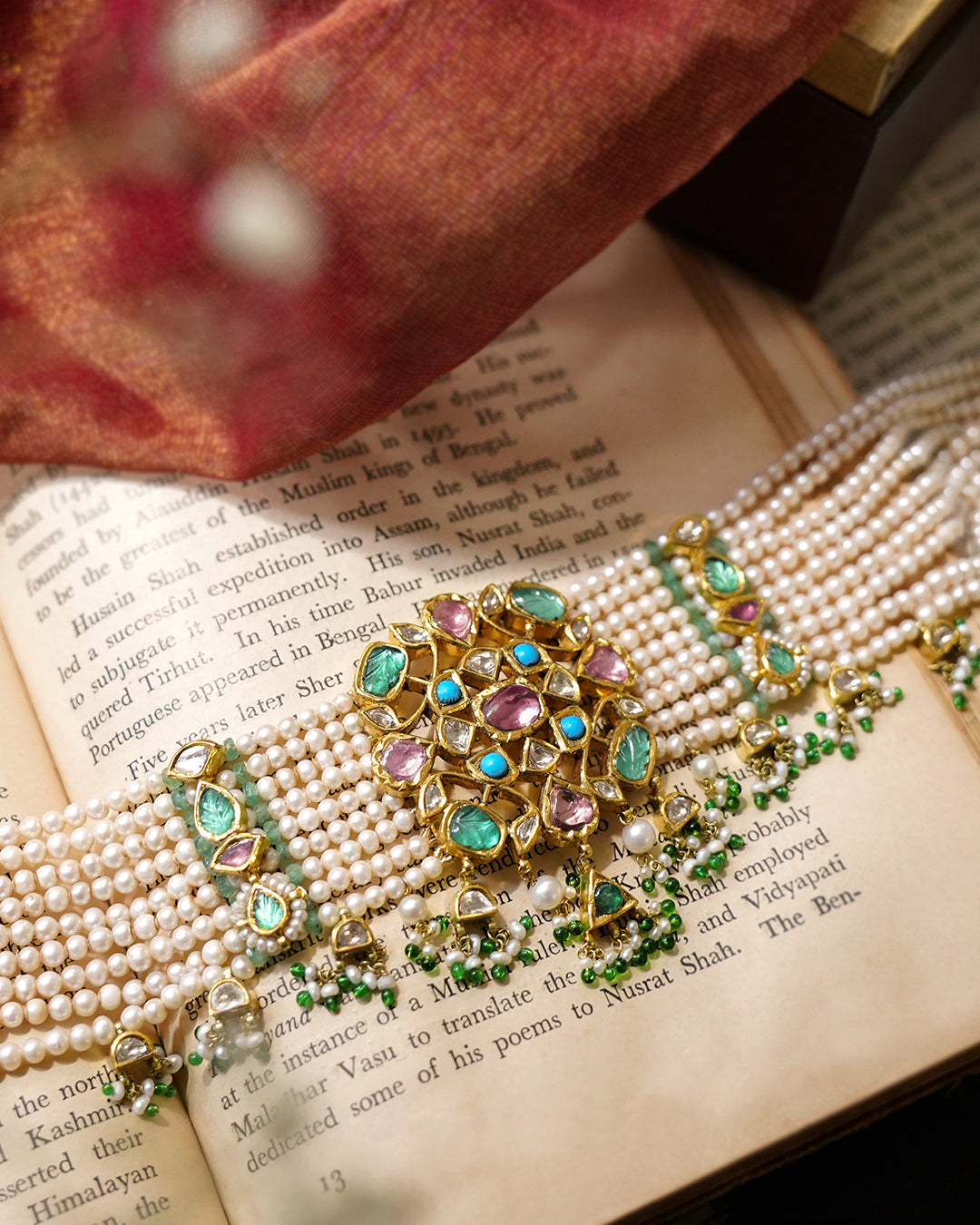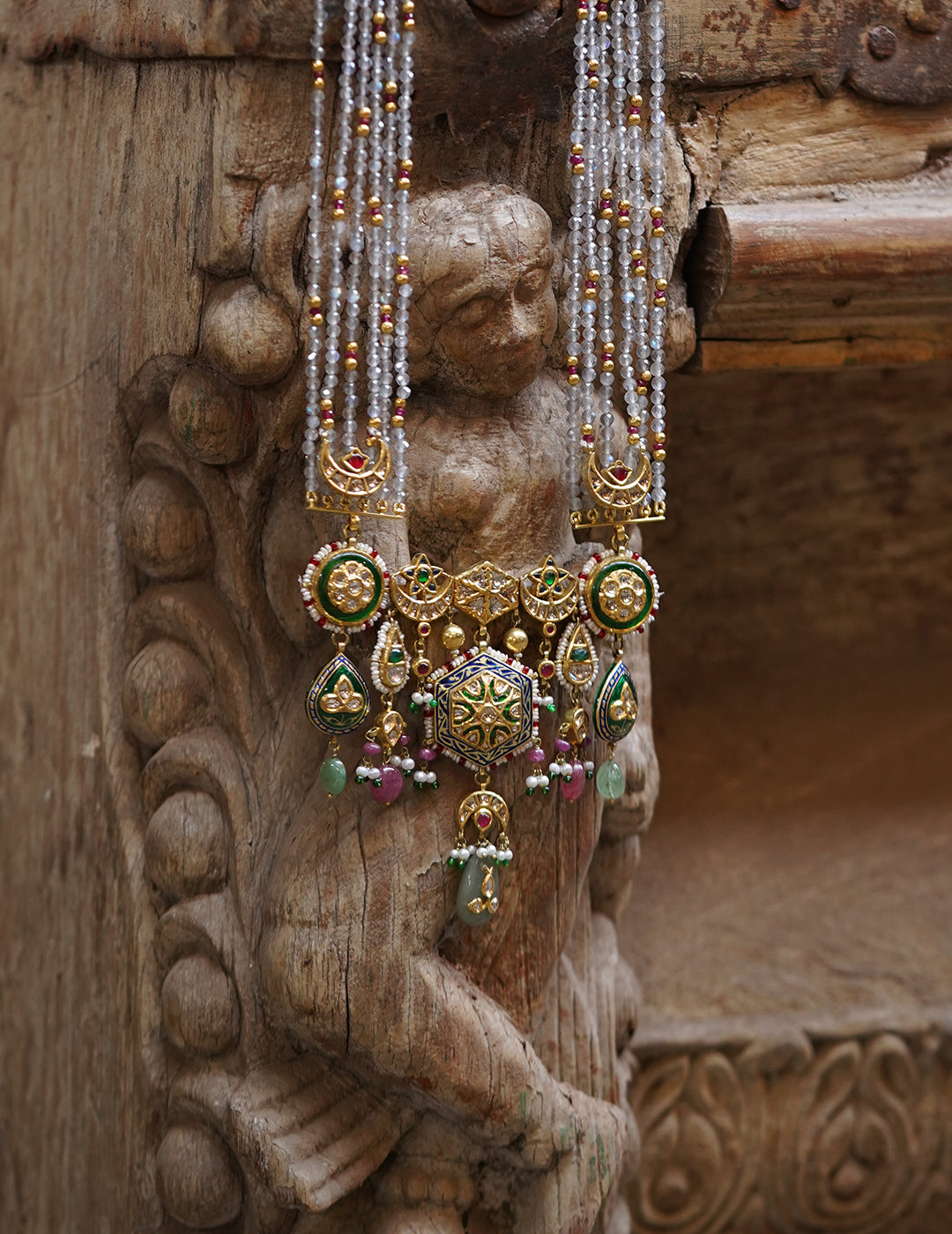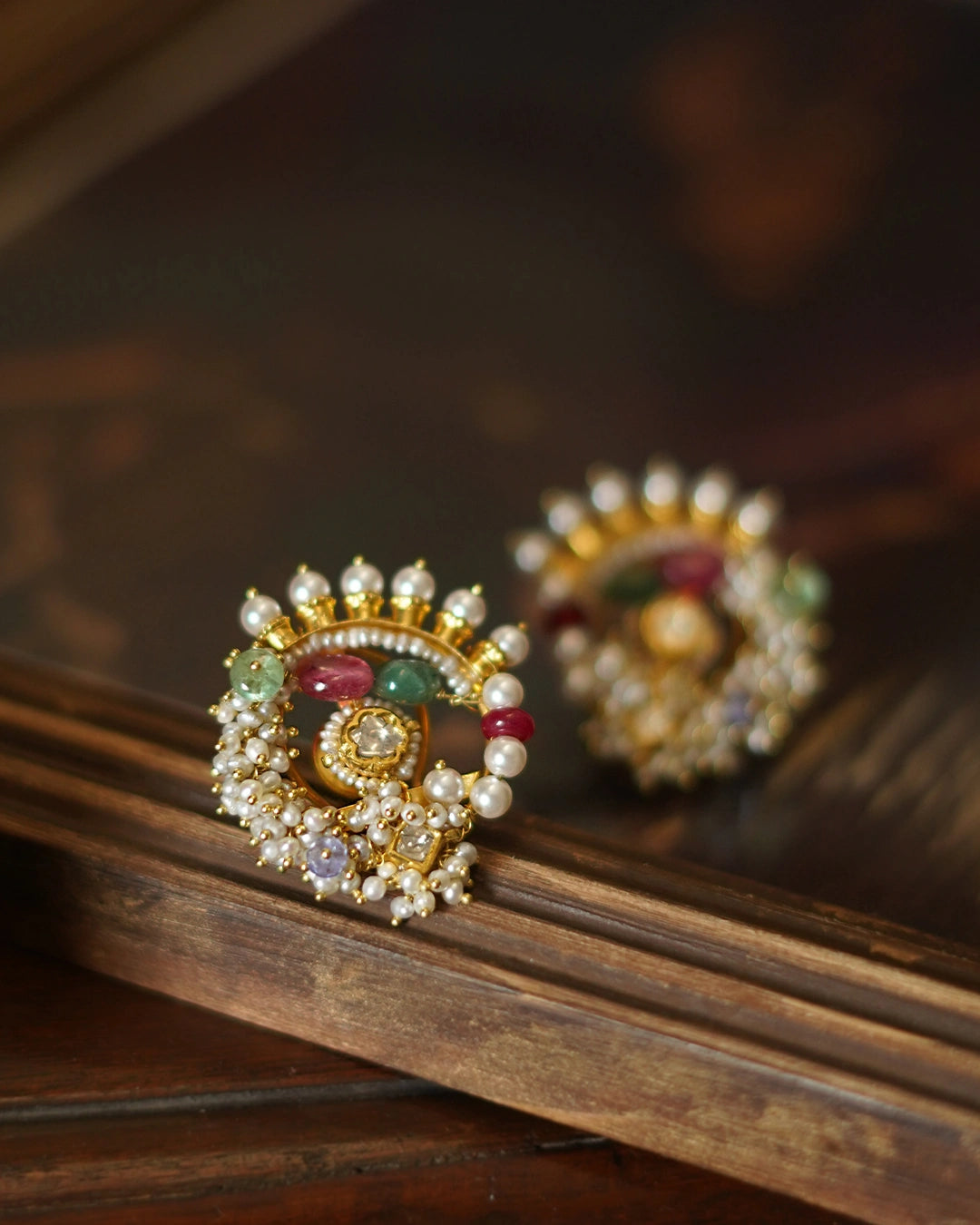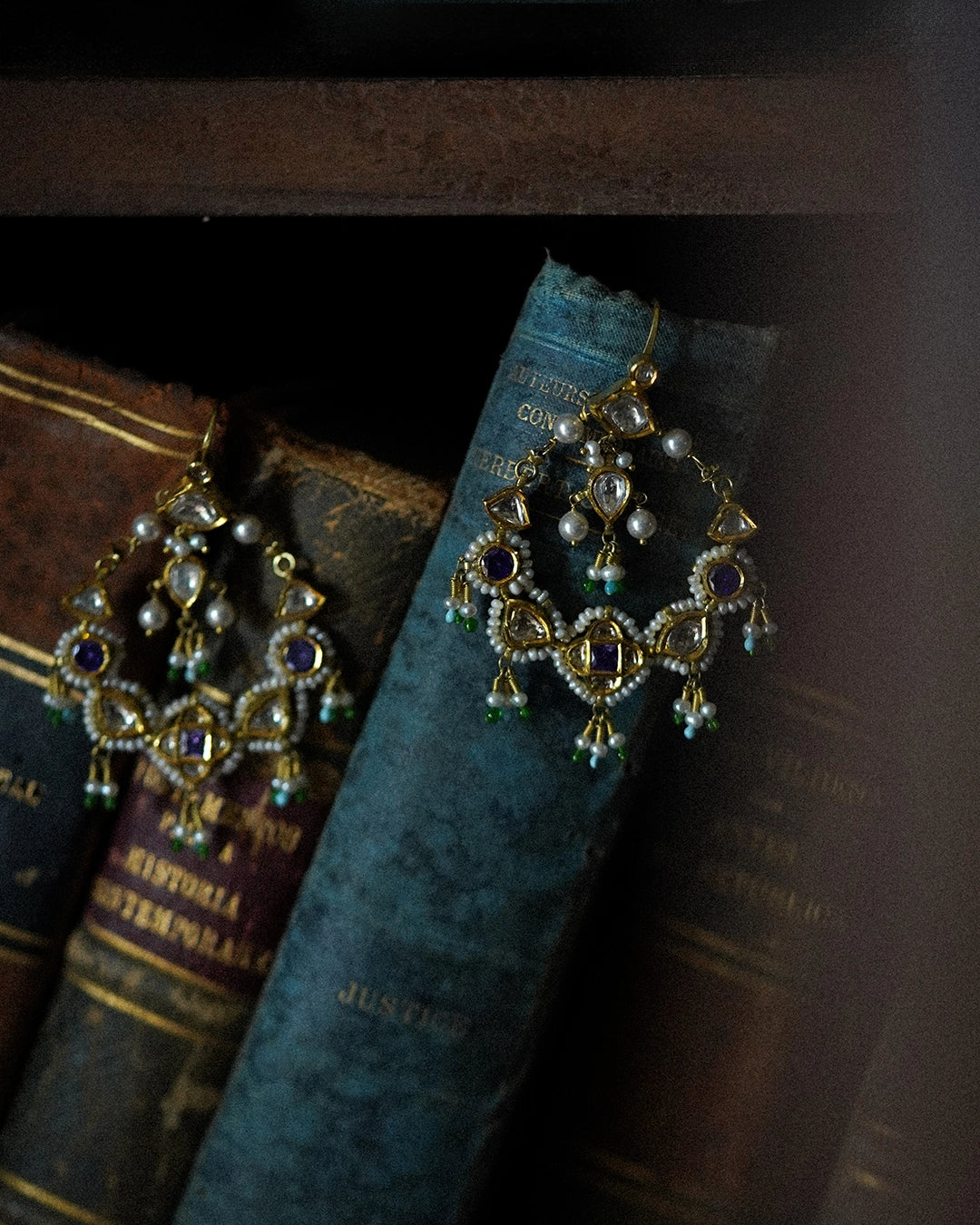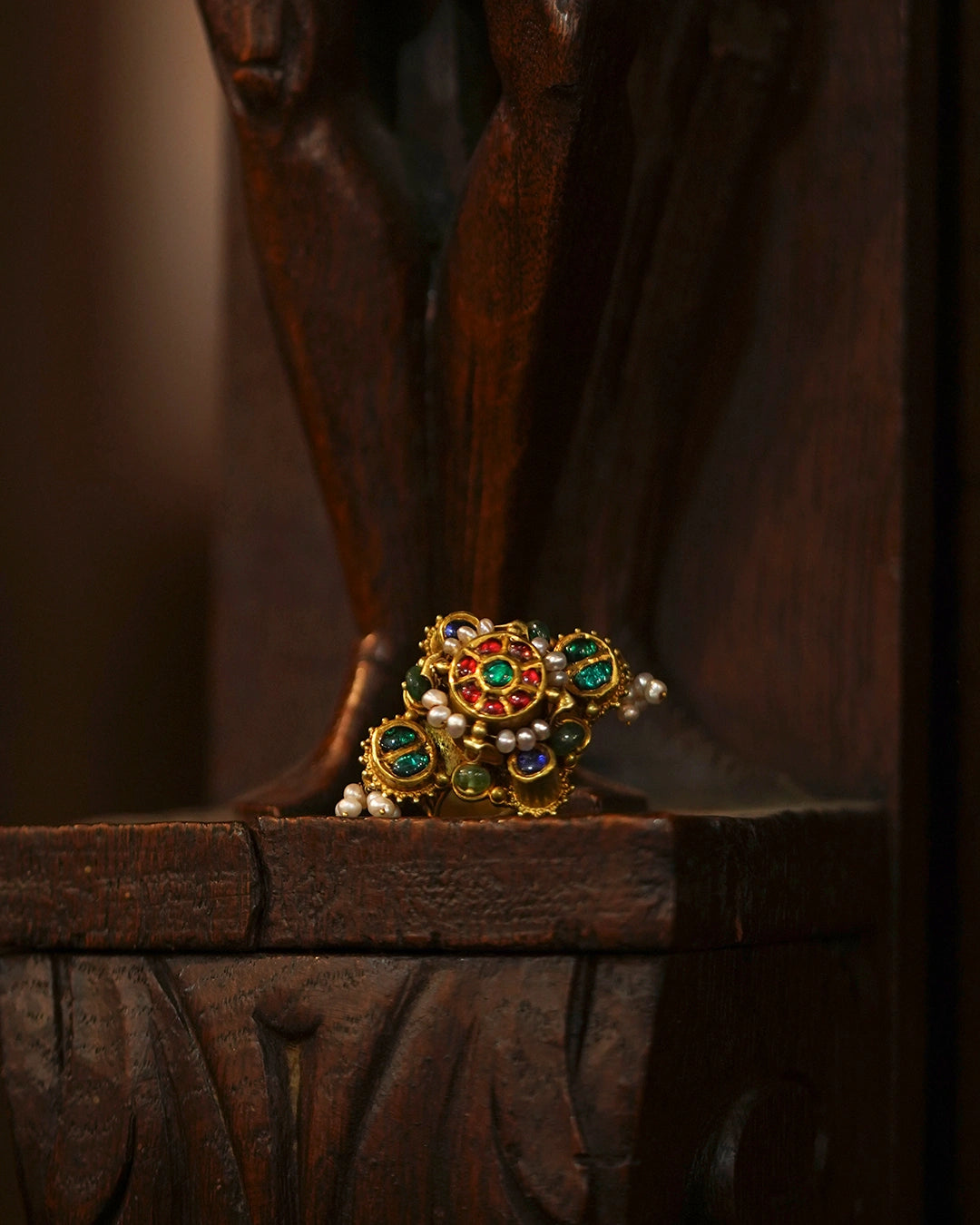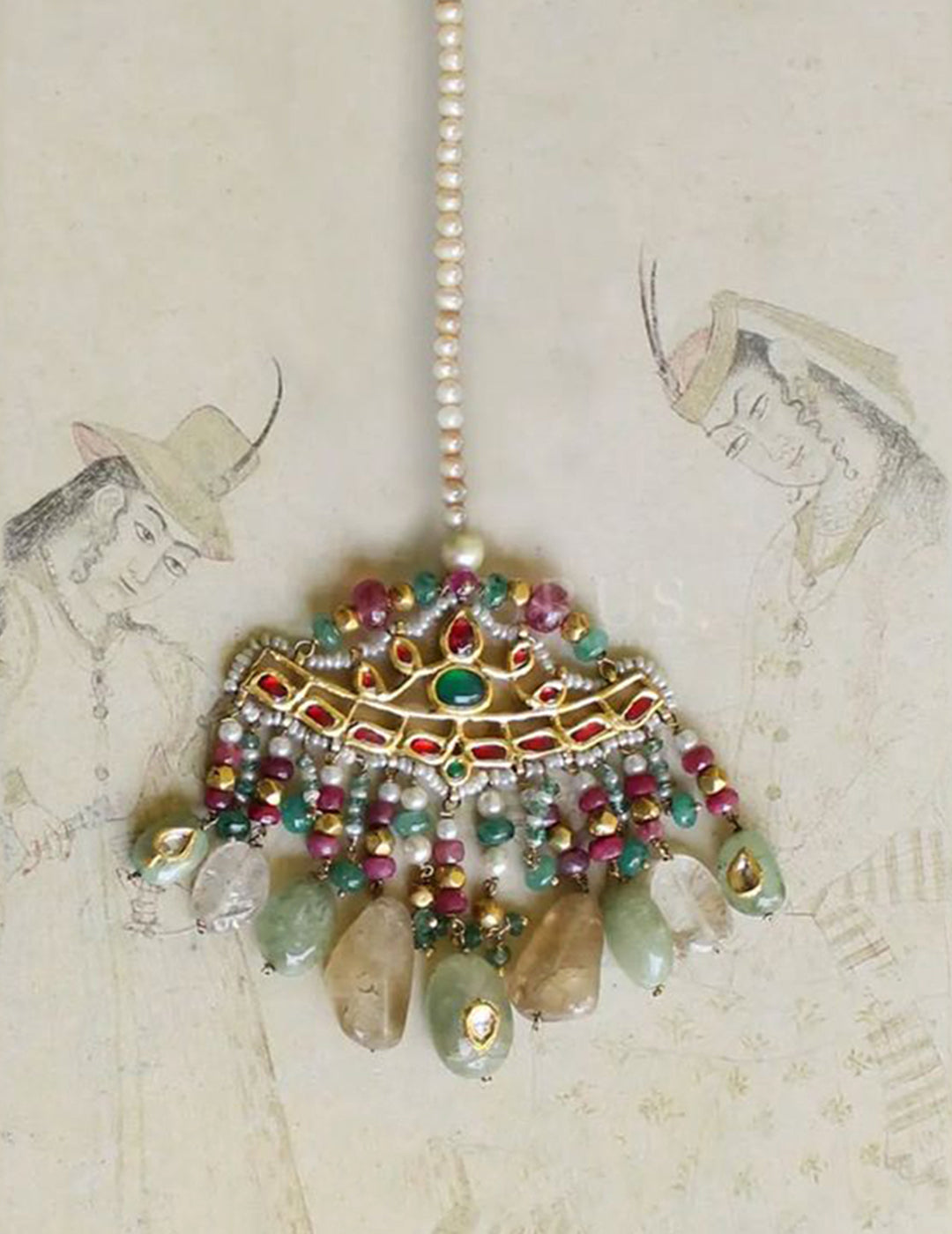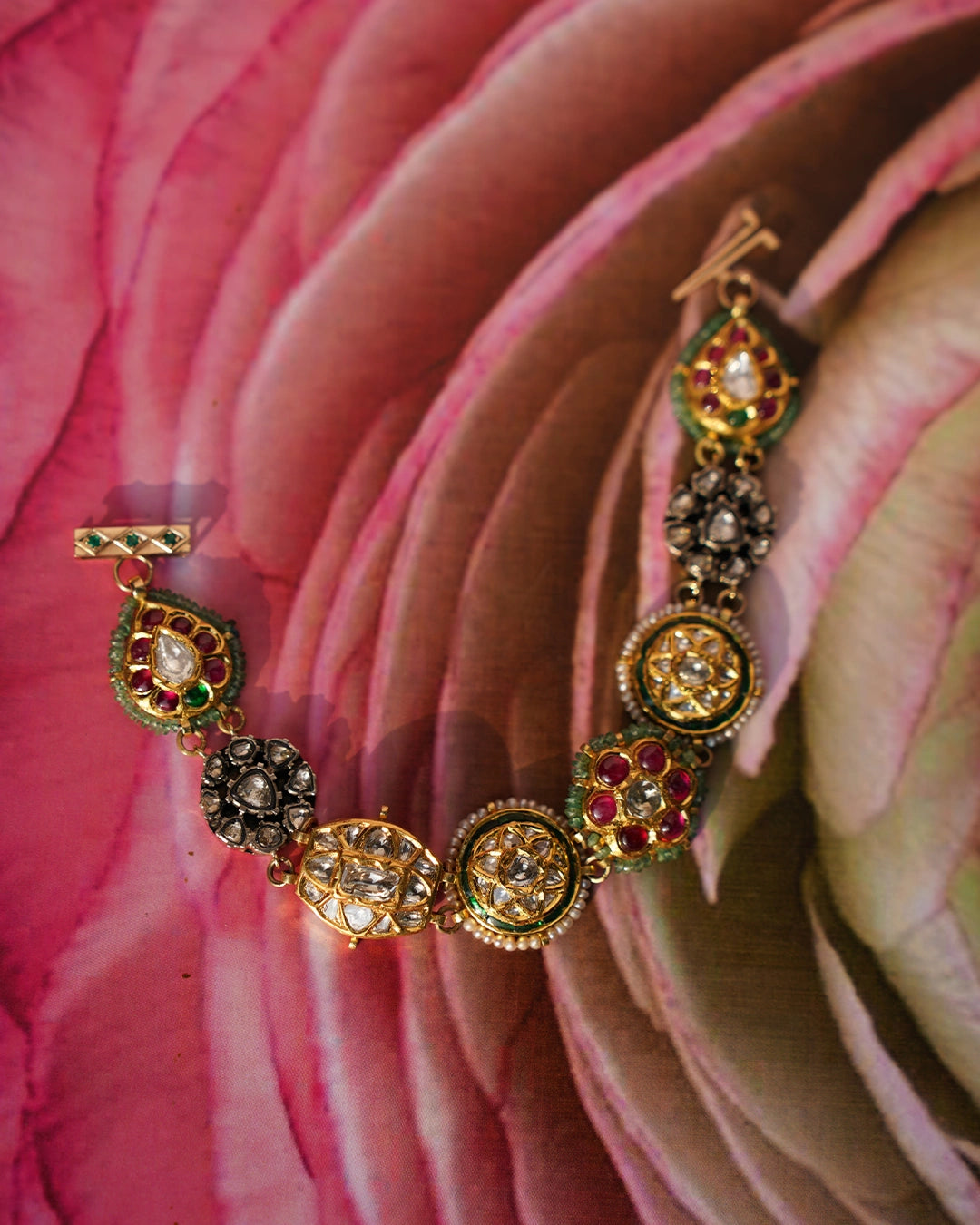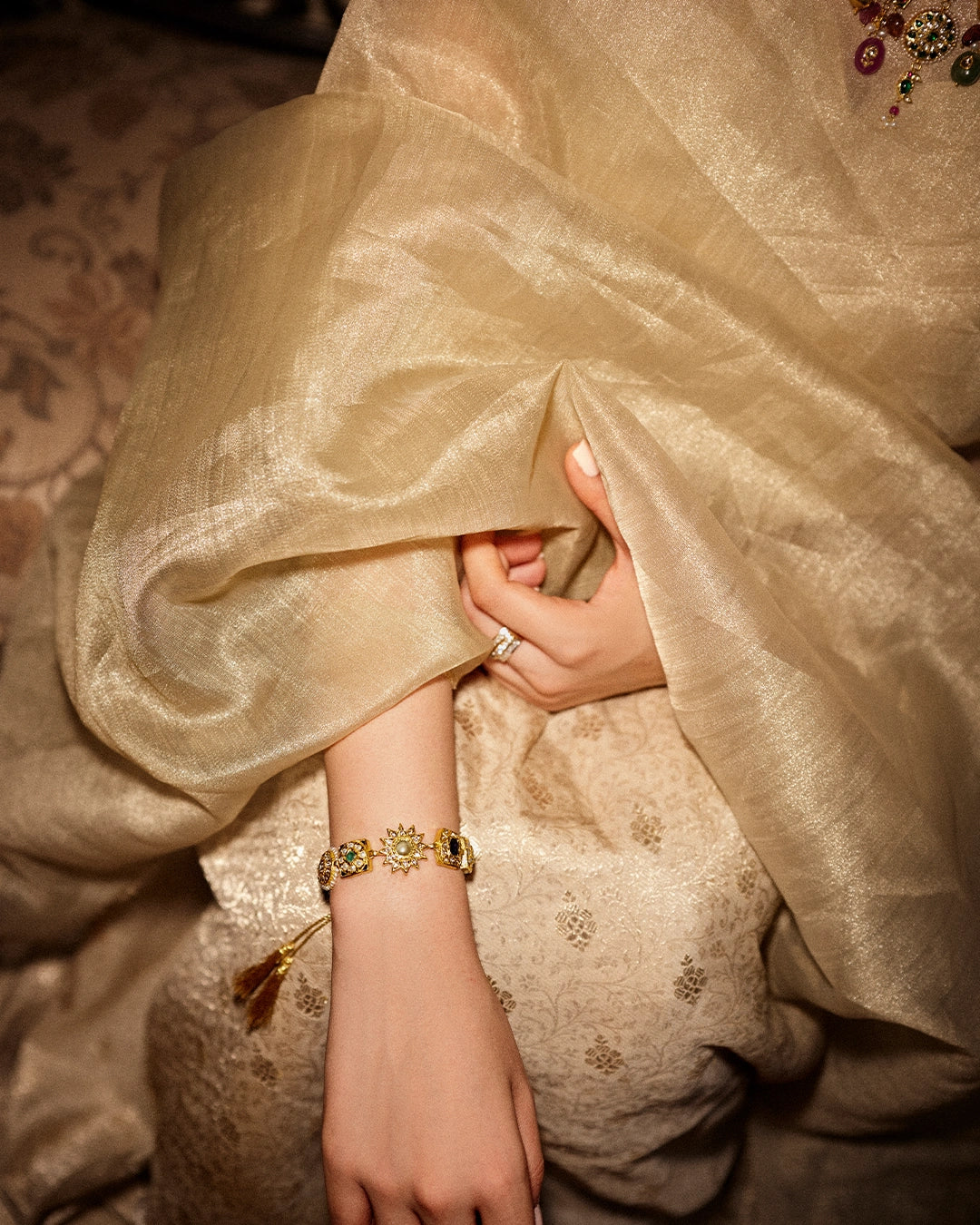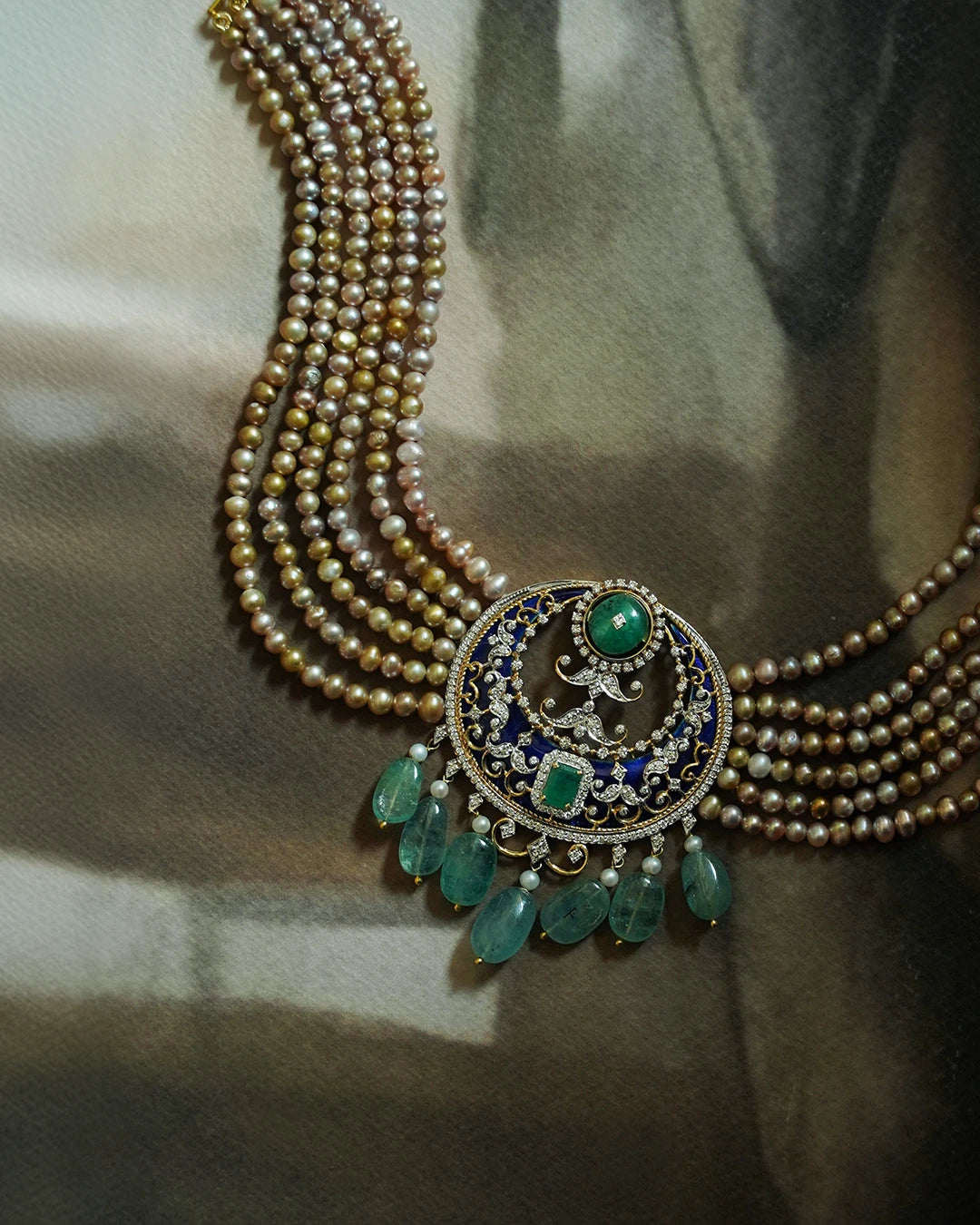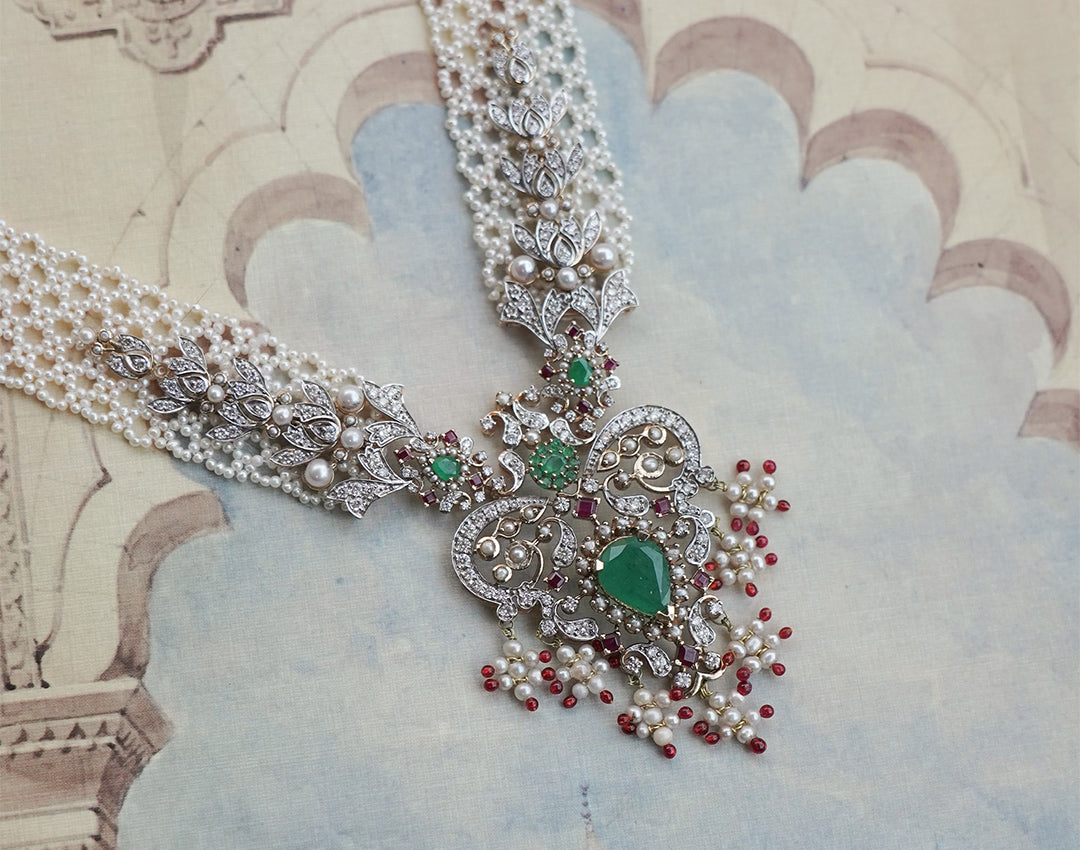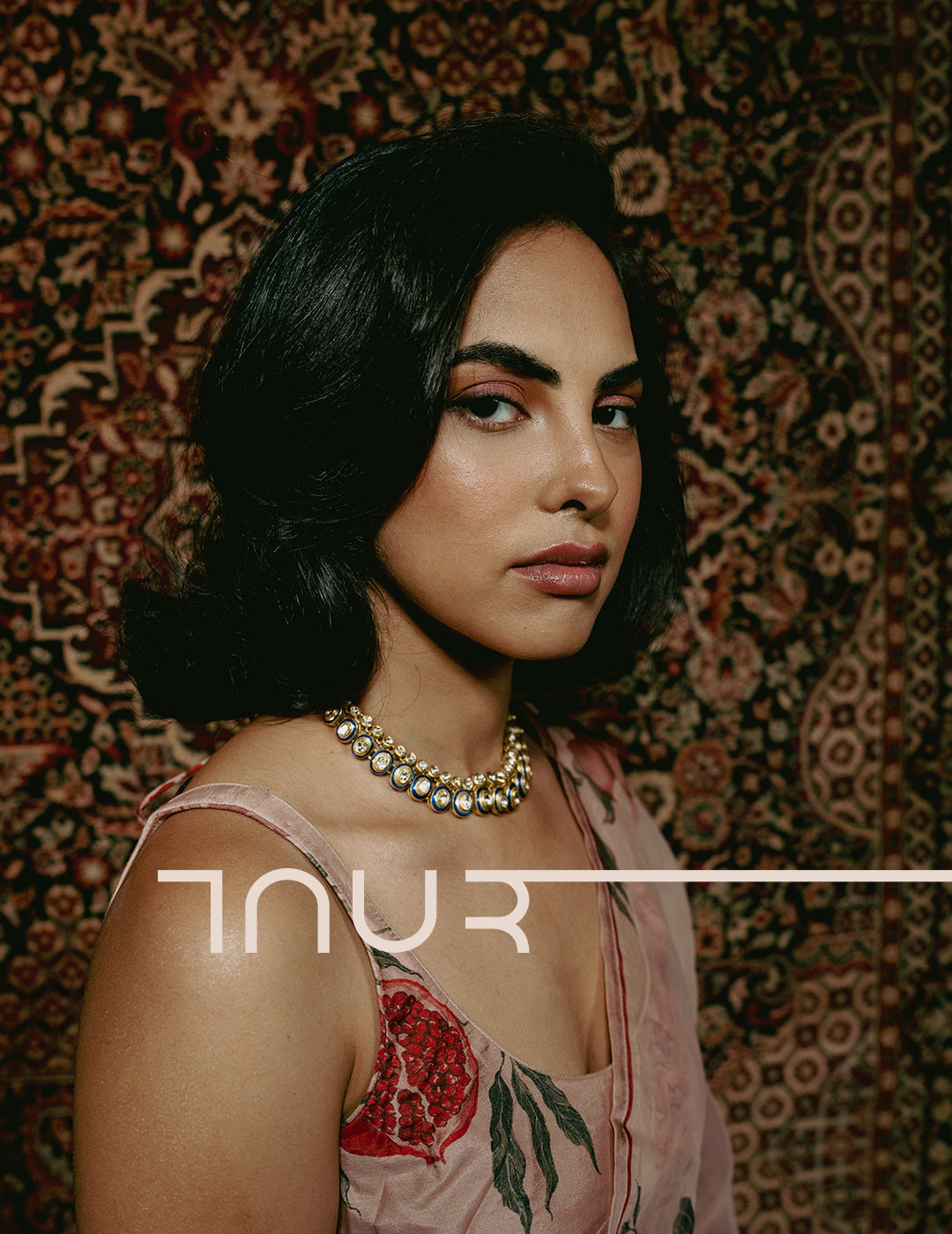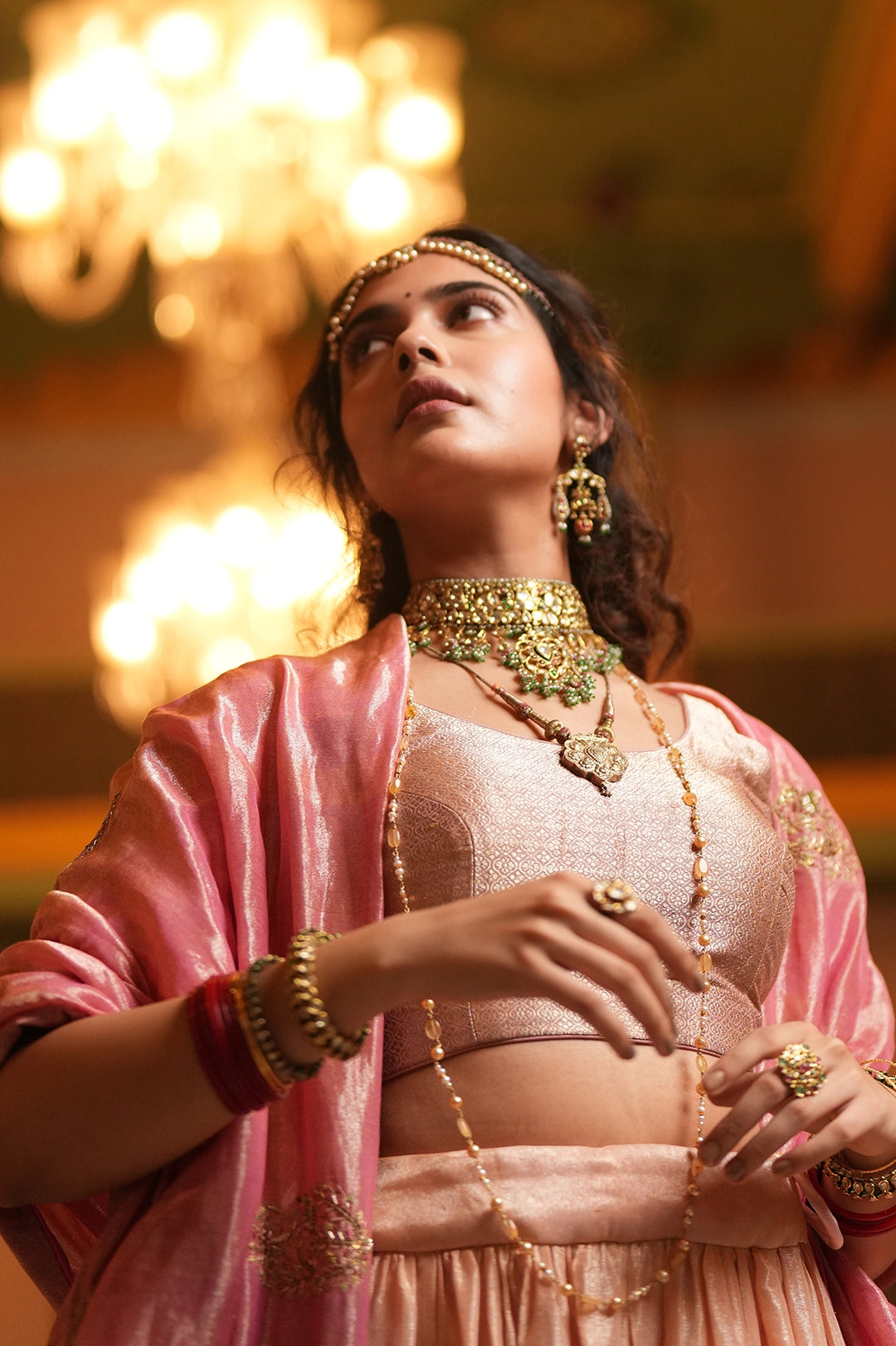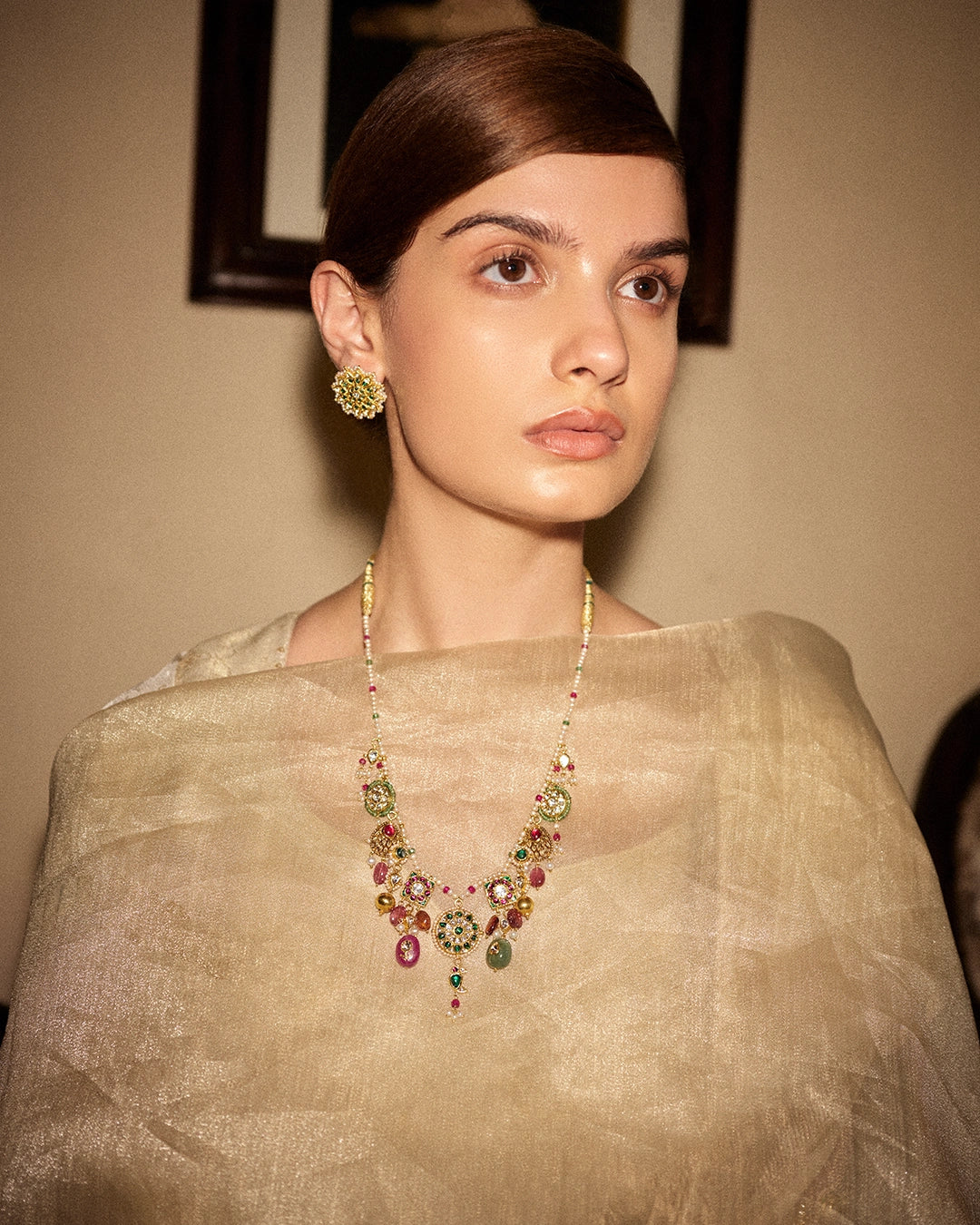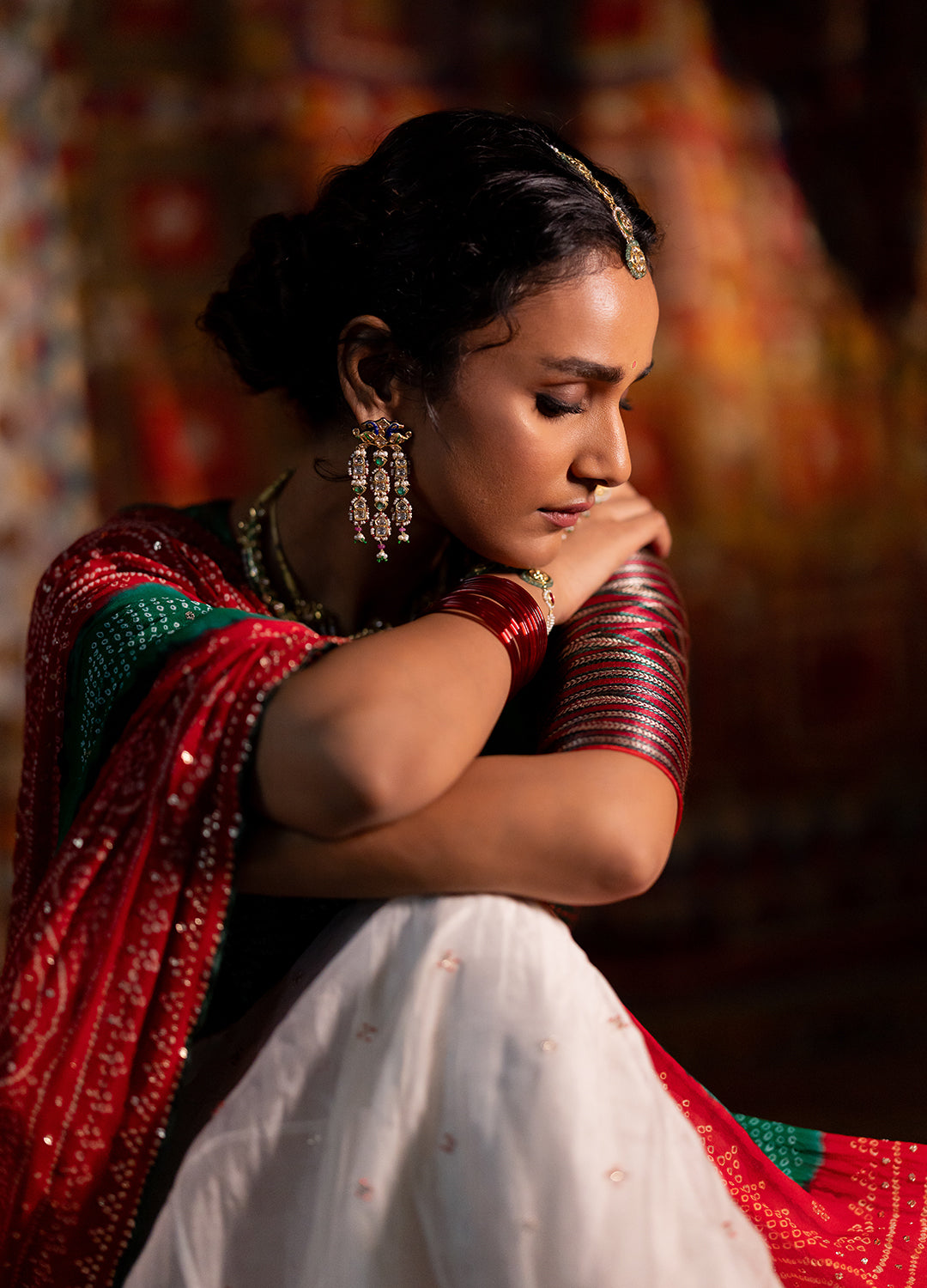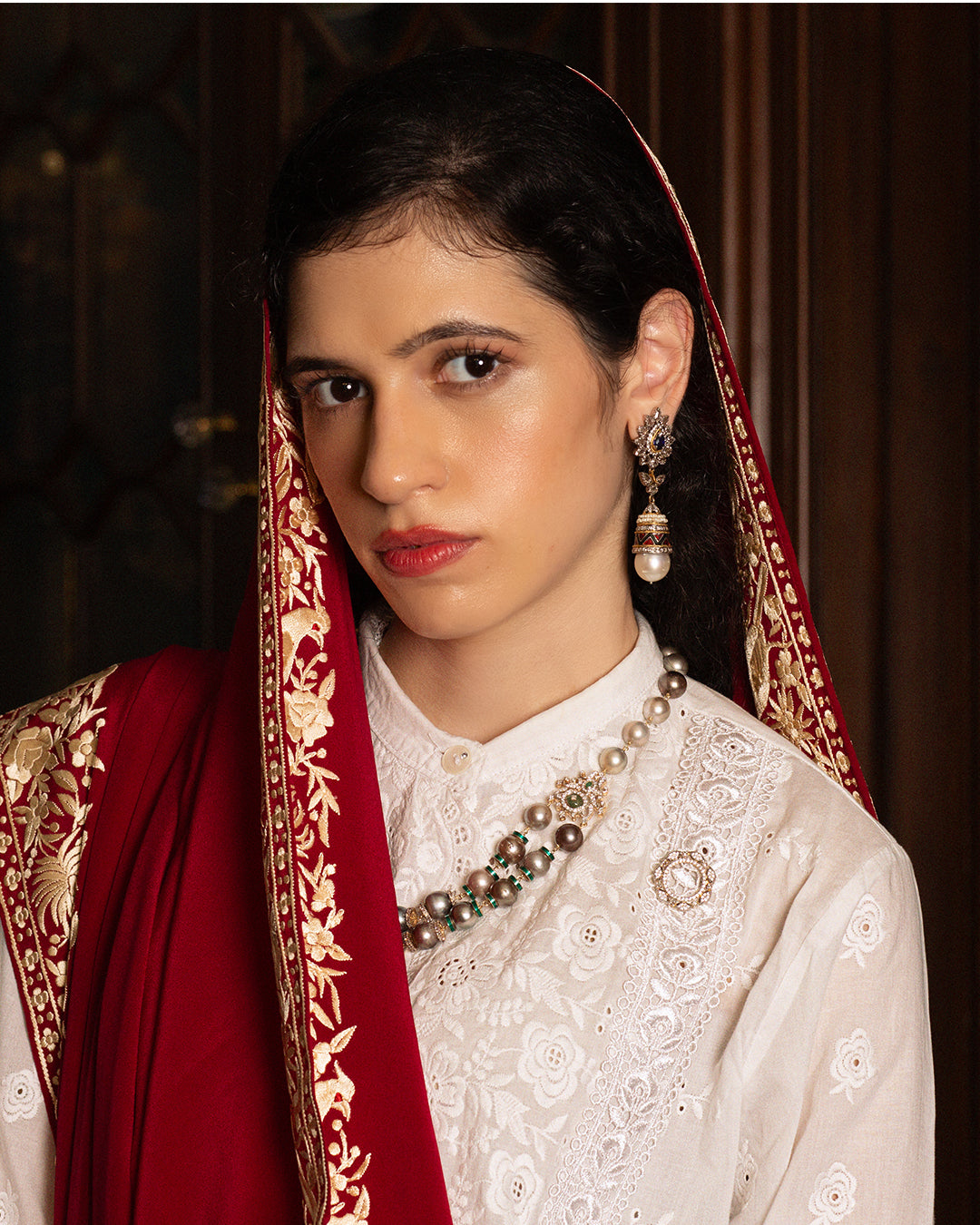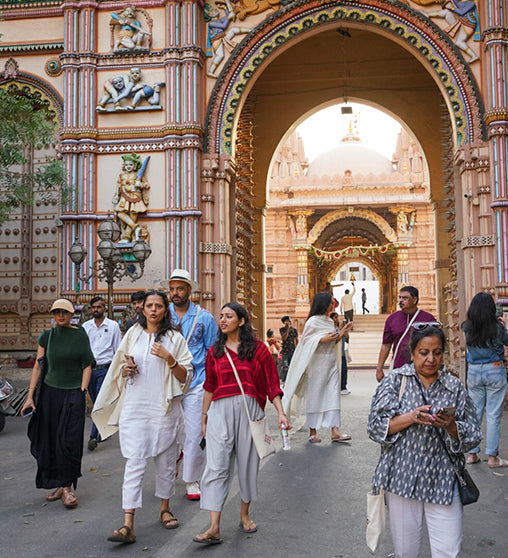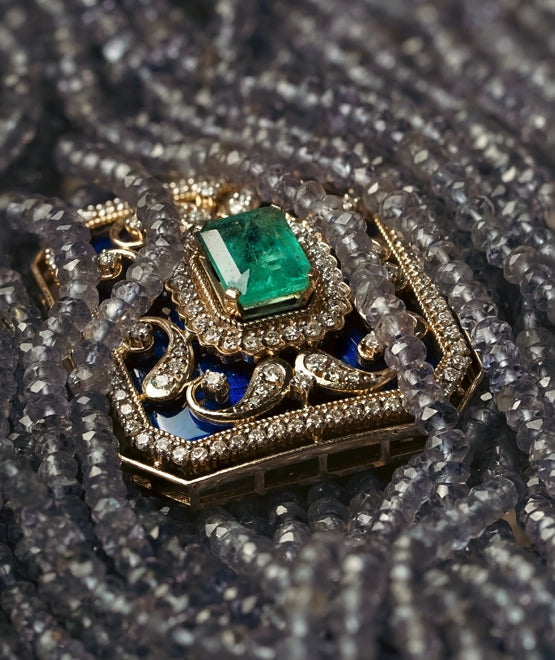If you want to see what a grounded, simple Punjabi wedding looked like, you could give Mira Nair’s 2001 masterpiece, Monsoon Wedding a watch. The colors, the events, the decorations, the dresses—everything paints a perfect picture of what a homely Punjabi wedding is like. If you observe Aditi’s bridal outfit carefully, you’d notice a set of red- and cream-colored bangles on both her wrists. This set of bangles is typical of the bridal trousseau of a Punjabi bride and is called Chooda.

Still from Mira Nair’s Monsoon Wedding
Image courtesy: YouTube
Chooda: A Symbol, a Blessing
A chooda is a set of bangles traditionally worn by brides of the Punjabi Hindu, Sikh, Punjabi Jains, or Bhabra community on their wedding day and for some time afterward. The chooda is typically red and white; the red bangles are occasionally replaced with some other color, but they are typically only in two colors.
In older times, the chooda was traditionally made of ivory with inlay work, but now it is made of plastic. Traditionally, brides wear 21 bangles, but in recent years, they have started wearing 7, 9, or 11 bangles. The bangles vary in size based on the circumference of the top of the forearm and the wrist end, allowing the set to fit snugly.
Similar to how a bride in a Hindu wedding wears a mangalsutra and sindoor as a sign of marriage, a Sikh or Punjabi bride wears a chooda. Chooda is believed to bring newlyweds good luck. In India, red is also a very significant color for a married woman. It serves as a symbol of abundance and positive energy, and it is said to strengthen the bond between the couple. The chooda is also associated with fertility and prosperity.
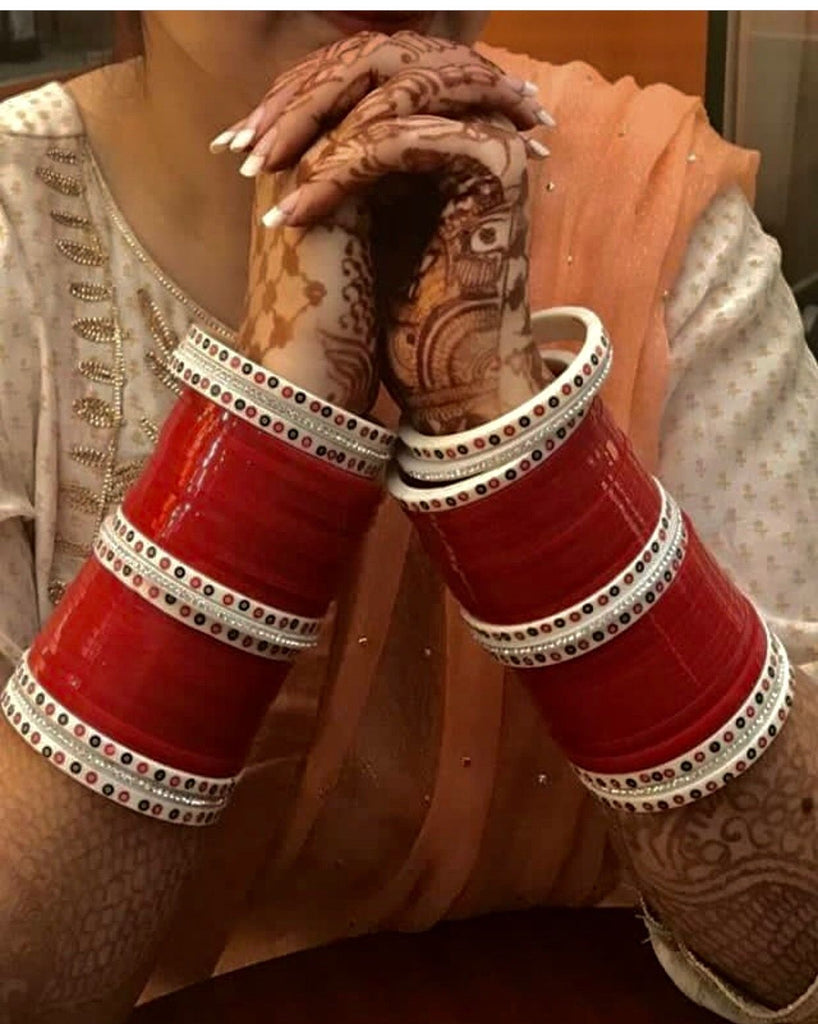
Image courtesy: Pinterest
As part of the tradition, the bride’s maternal uncle and aunt present her with the chooda, along with her bridal trousseau. Such is the significance of these bangles that they boast of a wedding ceremony dedicated to them! The chooda-wearing ceremony is usually held either on the morning of the wedding or a day prior. On the day of her wedding, the ceremony takes place after the bride has taken a bath, the last bath in her maternal home, also called Khaare Laana.
During the auspicious chooda ceremony, the bangles are first cleansed by immersion in Kachchi Lassi, a combination of milk and water, along with rose petals. Then the maternal uncle and aunt of the bride make her wear her bridal chooda sets on both hands to finish the ceremony. If there are two uncles, a small, endearing competition is held; the winner is the one who places the chooda first.

Chooda purification ceremony
Image courtesy: Pinterest

Image courtesy: Mann Hands Photography
Following that, the family members tie a Ganna, a sacred thread, around the wrist of the bride. It is considered to fend off evil spirits. After the wedding rites are complete, the husband opens it. The bride typically sits through the entire ceremony with her eyes closed and her head draped in red. A white cloth is then placed over the chooda. This is done because seeing the chooda before marriage is regarded as unlucky.
Customarily, a newly married bride would wear a chooda for a full year, but if she became pregnant before her first anniversary, the chooda is removed. When the color begins to fade, her in-laws would have it re-colored so that everyone knows she has only been married for less than a year.
After the first anniversary, her in-laws would hold a small intimate ceremony on an auspicious Punjabi holiday, usually, Sankranti, in which the chooda is removed and glass bangles are placed on both hands. This is usually served with sweets and a monetary shagun. The chooda was then taken to a river, where a prayer was said before it was released into the water.
Kalire: A Reminder of Those Left Behind
Along with the chooda, another adornment typical to a Punjabi bride is the kalire. The family members and friends of the bride tie the kalire on individual bangles of the chooda set of the bride. The kalire are tied as a reminder to remember her members on her maternal side after the bride moves to her in-laws' home.

Image courtesy: Pinterest
Previously, the friends and family members of the bride made kalire that were covered in dried betel nuts, shells, dry fruits, and coconuts. They were made of all these edible items because back then, the distance between a bride's residence and her future husband's household was expected to be quite long. The bride would have to travel a good distance as a result, frequently with strangers. The bride's kaliras were designed to contain refreshments in case she became hungry while traveling.

Image courtesy: Pinterest
As a part of a fun ceremony, the bride shakes her kalire over the head of the unmarried girls present. It is believed that the girl on whom a piece or part of the kalire falls will be the first to marry (or the next number will be hers).

Image courtesy: WittyVows via Pinterest
